777888, Johndixson, tdracer,
unfortunately, cannot send images by PM, but these should entertain. For others, this is why your blender vibrates as it does... It also shows where conventional design met aerodynamic reality. FWIW, a rotor or prop is not quite the same as a wing, there are accelerations that exist that are unique to the rotating device, and they make some usual stuff do not so usual outcomes.
This is a bit of history on a project on the VR7 blade which you would know is the CH/MH 47 blade, and nice it is too. The designers spend buckets of loot making a low Cm section, to keep pitch link loads in order, and then the darn pilot puts the 20 cents in the slot and cranks it up, spoiling all of that hard-earned effort.
None of the following look like the curves you would see in the FAA Helicopter Handbook, or the Airplane manual, all of the normal stuff is static pitch angles, these are the real world of rotors... where the pitching occurs at the shaft frequency. Conventional wisdom suggested at least for fixed-wing stuff that dynamic pitching was dependent on the change in pitch in the distance of a single chord, which definitely doesn't align with reality with choppers, The assumption is that the bound vortex has to have a limited time to develop, and that cannot be longer than the chord of the blade.... doesn't look like that in the real world. As a start or stop vortex rolls down the blade, it takes a finite time to do its bit of messing everything up, biggly. That may not be quite harmonic, in fact, I would be amazed if it was, this isn't a tidal locking sort of thingy; it is the convection of distortion down the blade, and it will run its course at its own rate, that is proportional to the blade velocity, but not exactly equal.
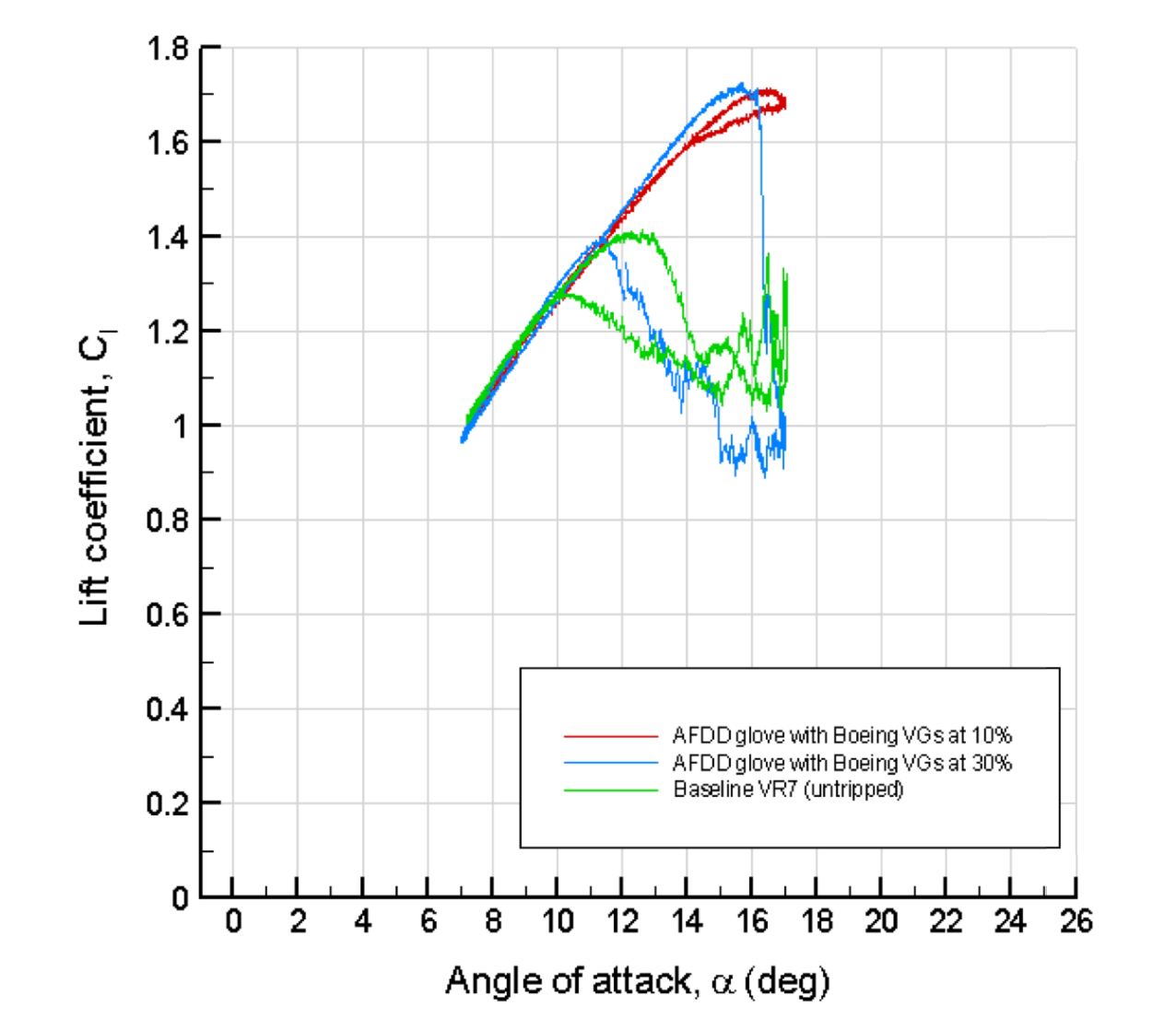 Take home:
Take home: neat lines don't happen on helicopters. but stuff can be done about that.
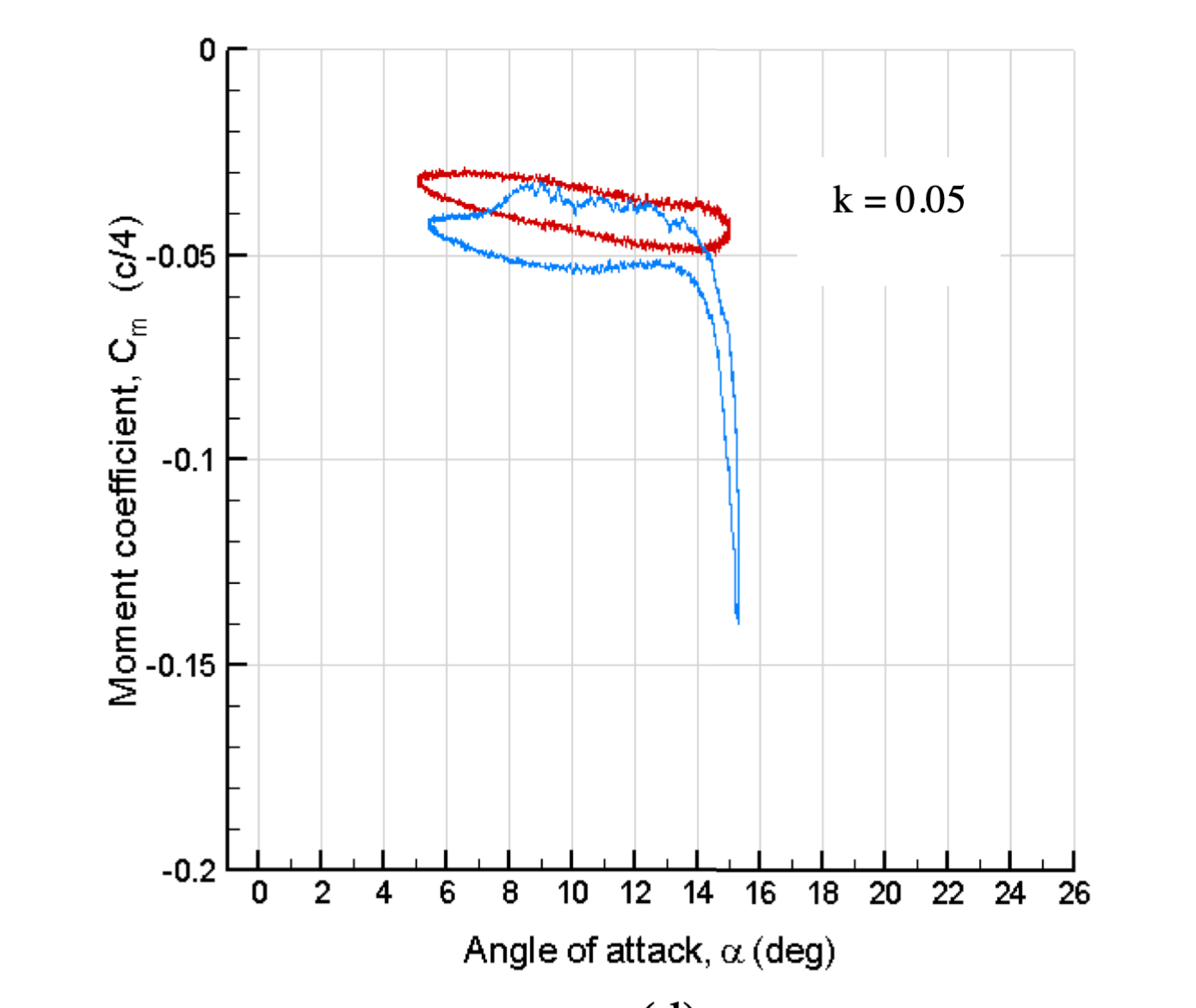 Take home:
Take home: Oy! who ordered that. We spent good money on a low pitch moment section.... and you guys went and spun it up. Not fair!
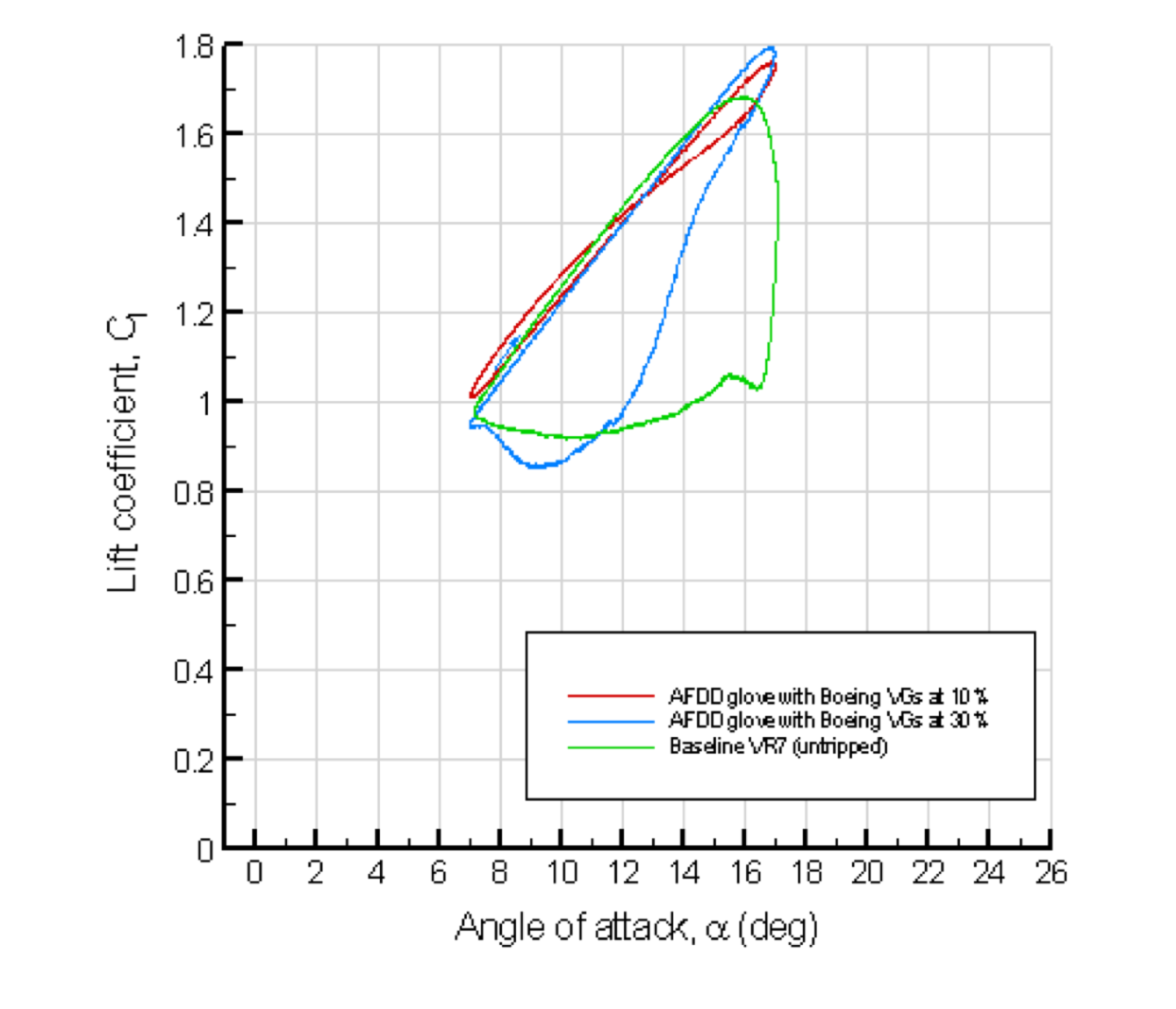 Take home:
Take home: At least we can filter out some of the hairy wiggly bits....
 Take home:
Take home: Hey! wazzap here! we wanted better, not wusser.
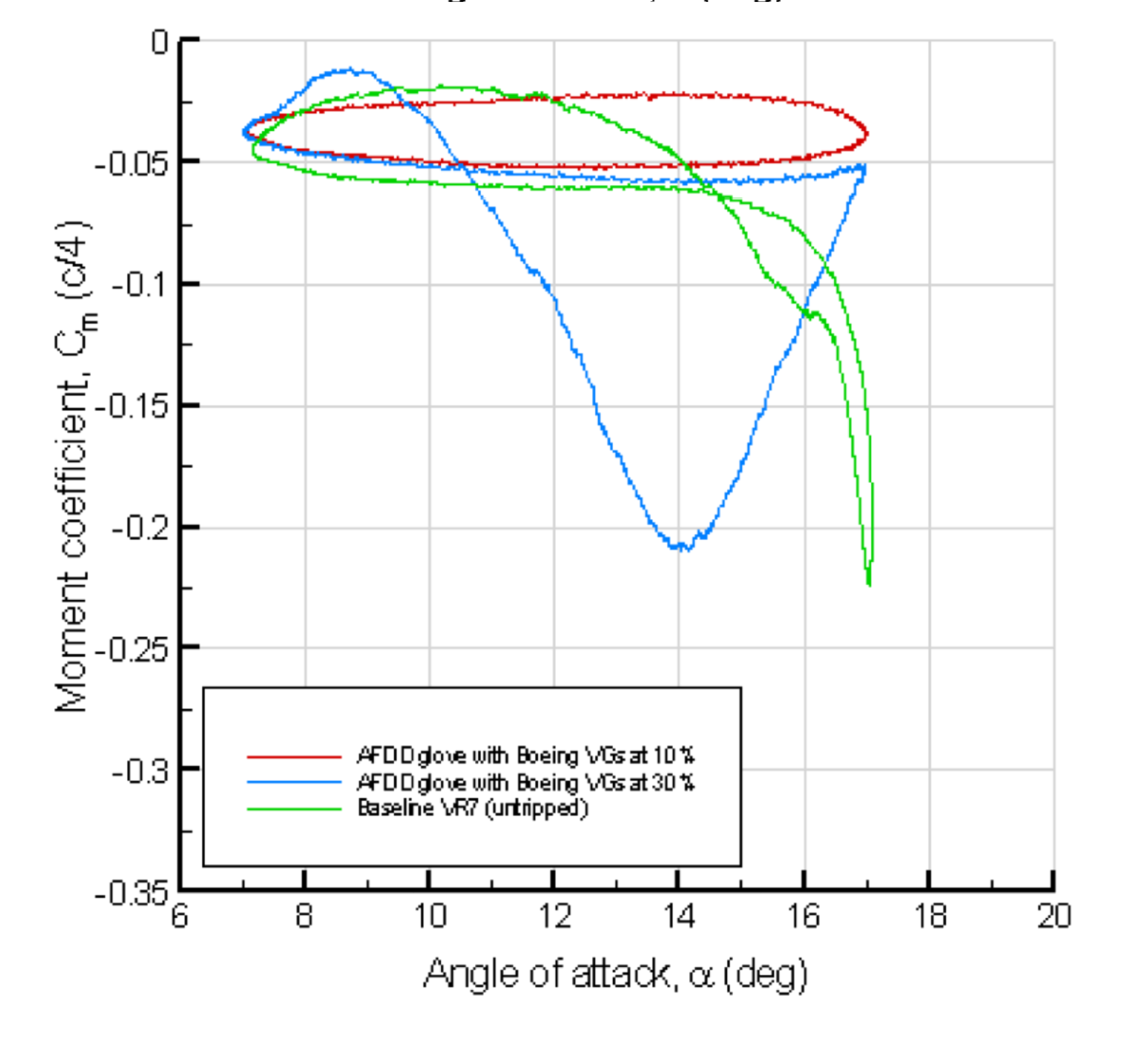 ....
....
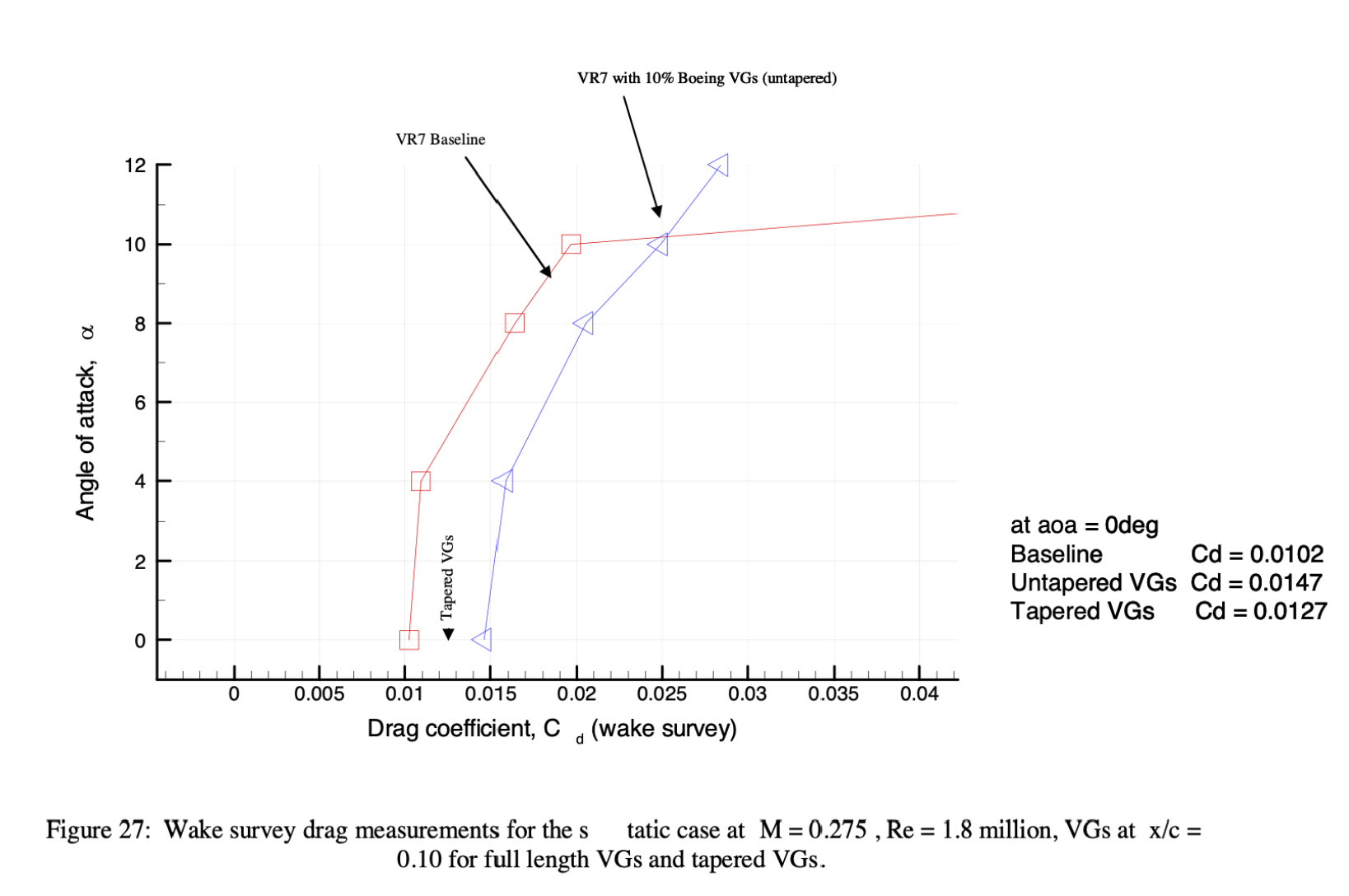 Take home:
Take home: Ouch, we started with Cd of 0.01 and improved that to.... 0.015? a 50% increase in drag, but that doesn't happen on our non-flinging wings.. YGBSM!
For the drivers, that's what your loads are doing when you have a rotor in translation; the pitch is harmonically controlled, and that is the cause of the main vibes. does stuff about that is worth the effort, it keeps the fillings inside the dentine, and, all it needs is this device and 50% more torque, or something different, which is what we got. Boeing got a reduction in vibe and linearisation of the curves but had a 50% torque penalty due to the effect of radial acceleration on a free vortex in the wake of a VG. We got the vibe down, and torque requirement went down too, remove torque demand, apples for apples you reduce torque, increase anti-torque margin, and that adds to more control.
Martin, P., Wilson, J., Berry, J., & Wong, T. (2008). Passive Control of Compressible Dynamic Stall.
26th AIAA Applied Aerodynamics Conference, 1–33.